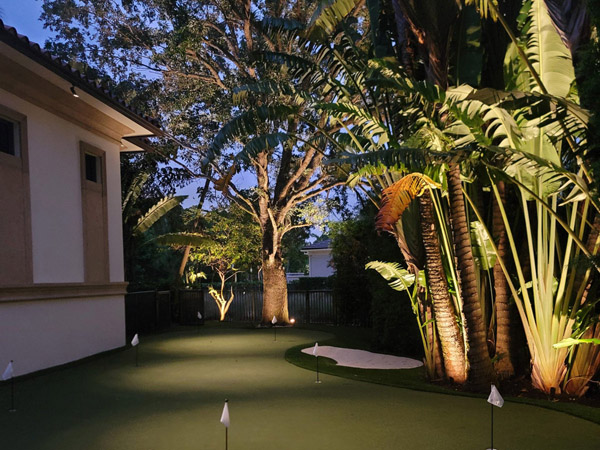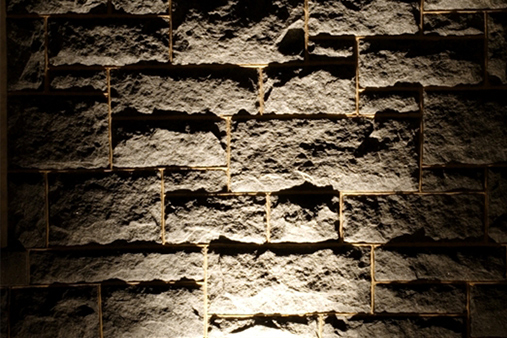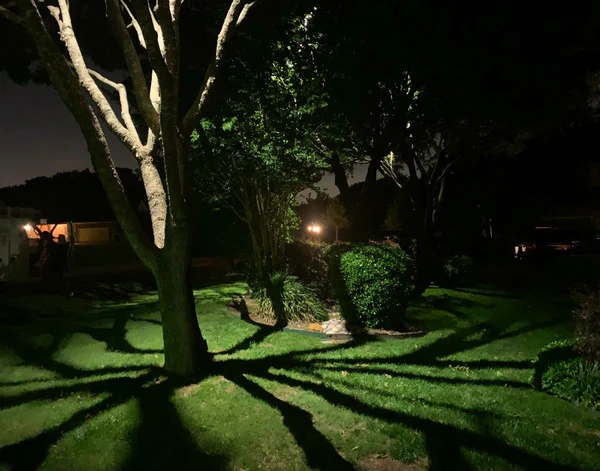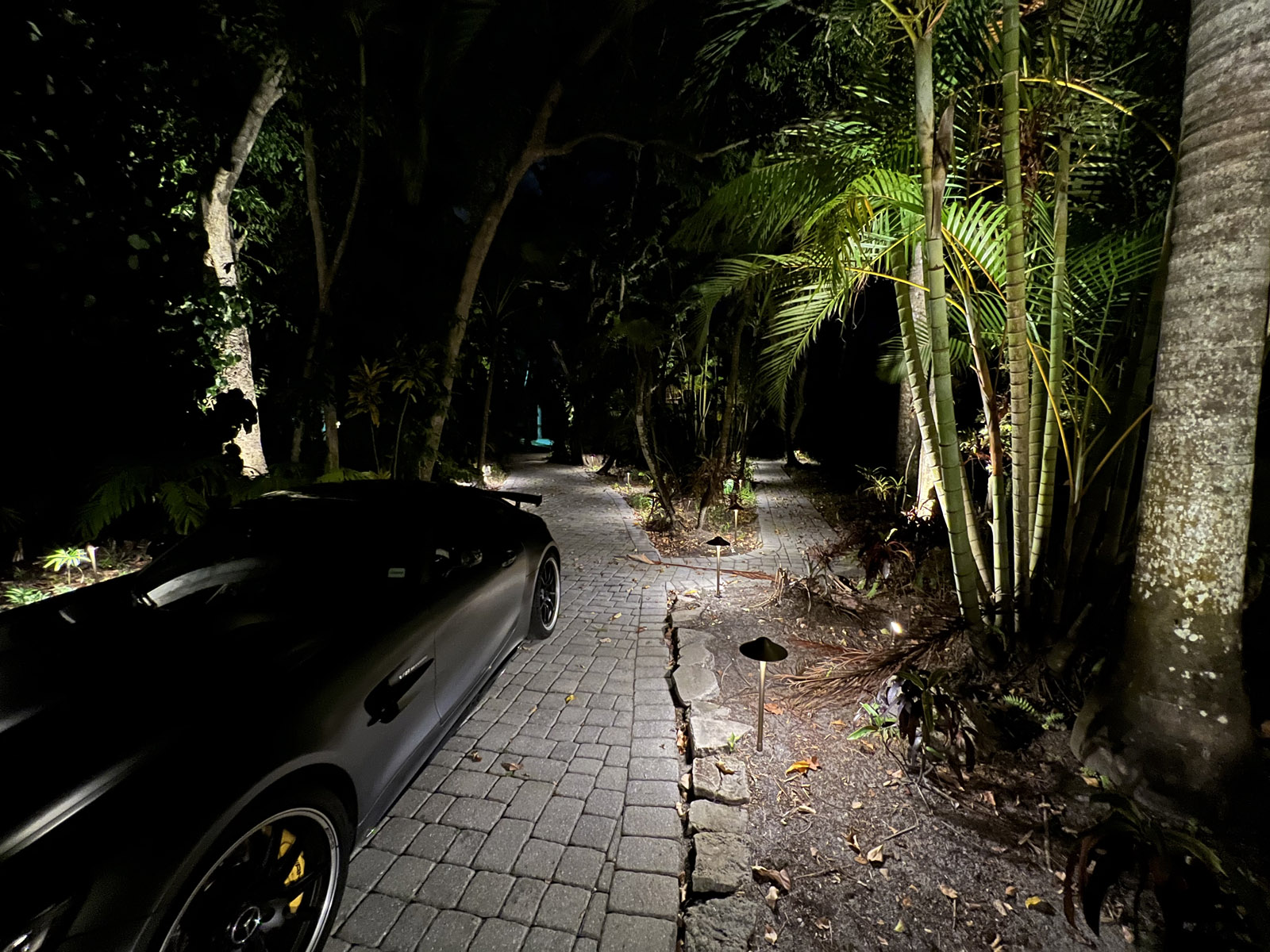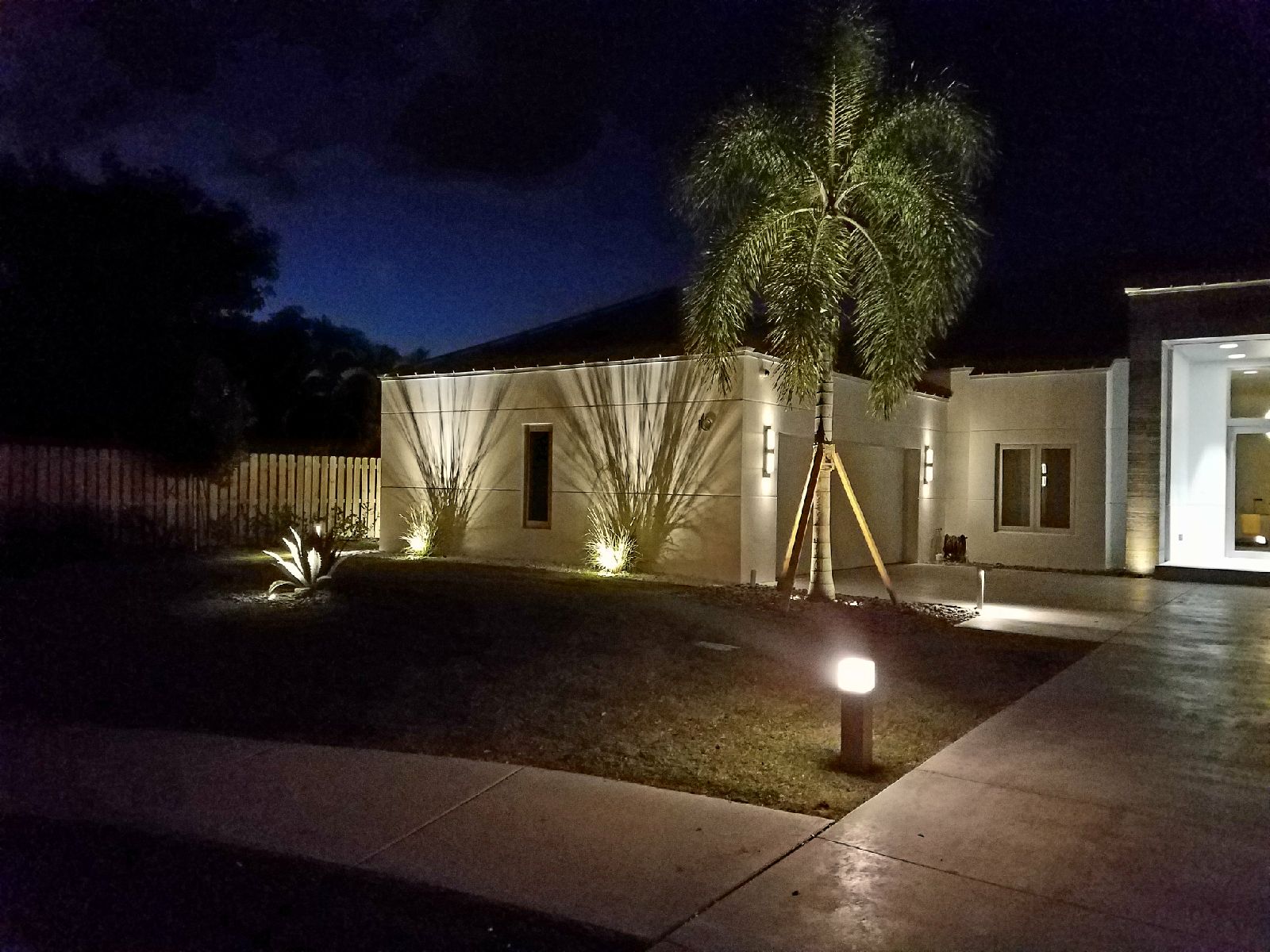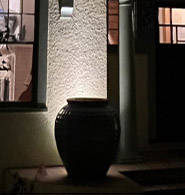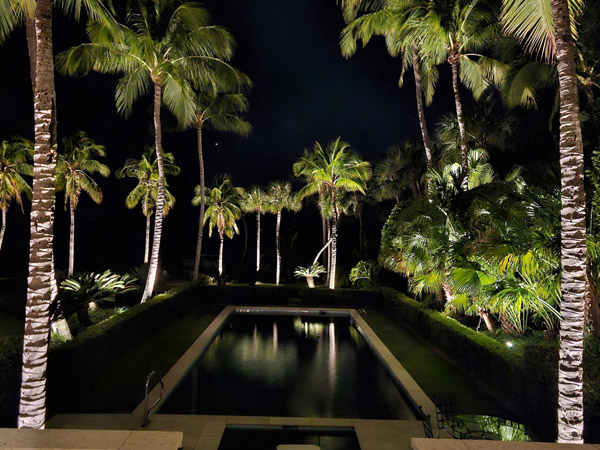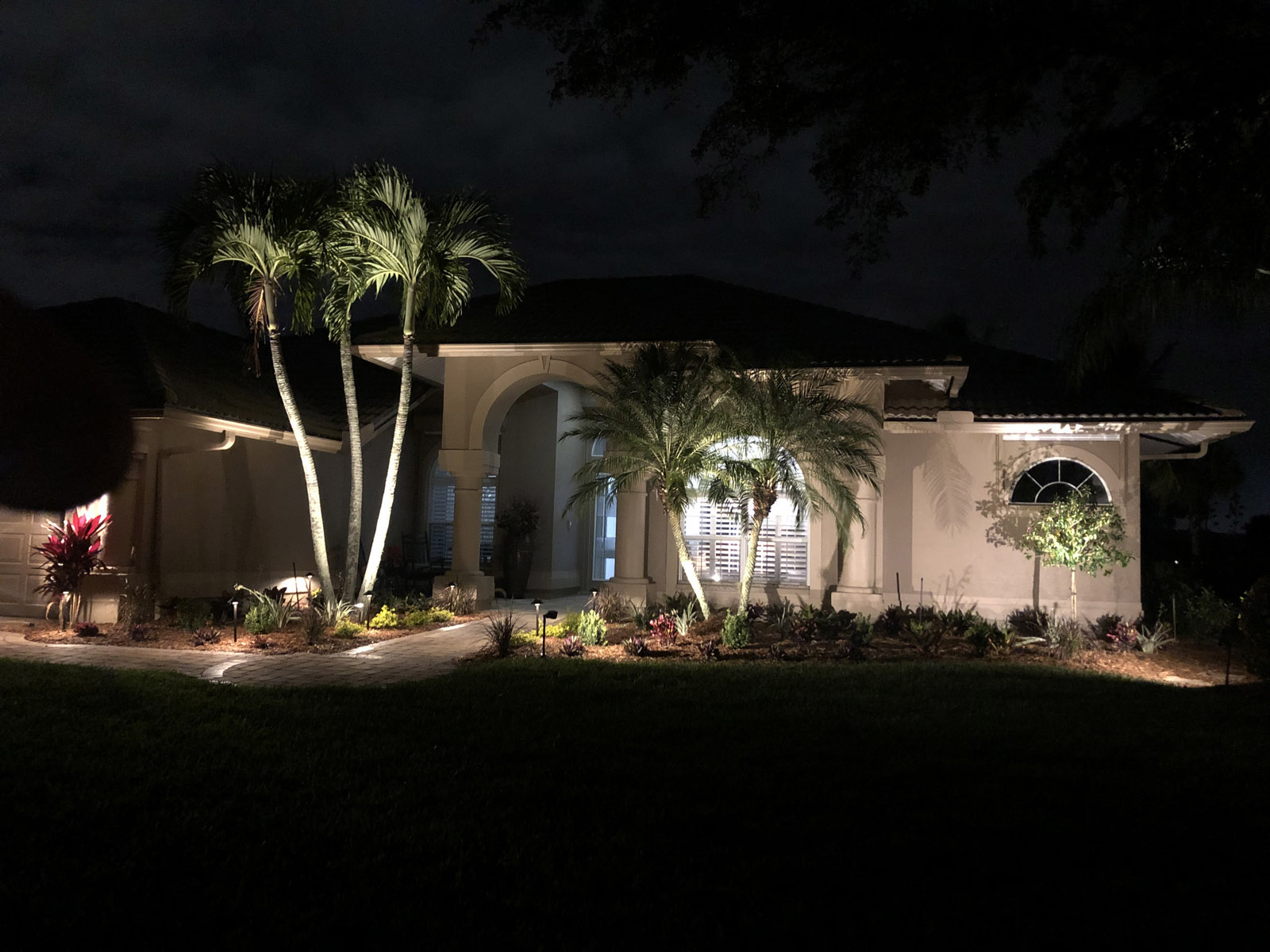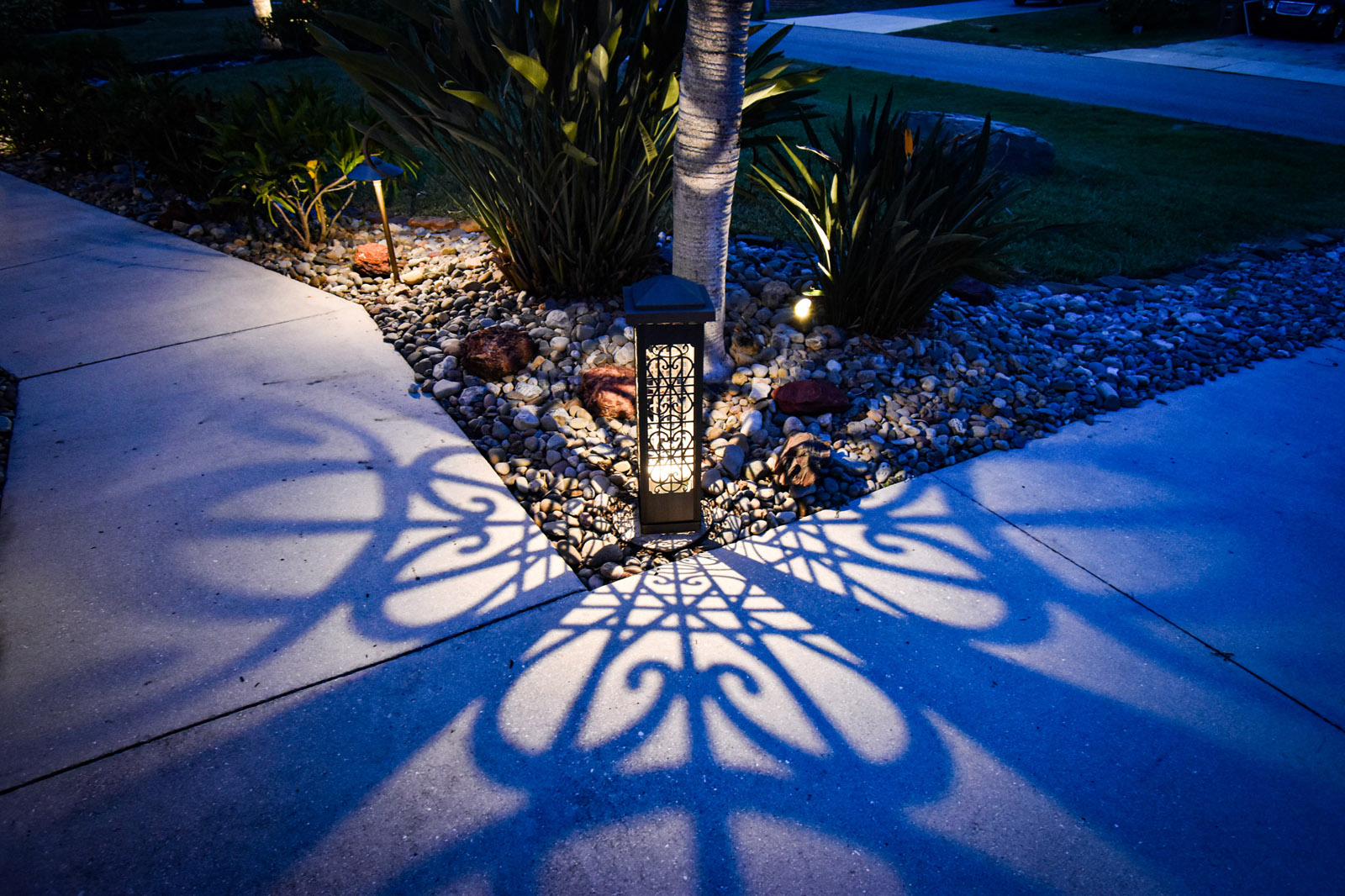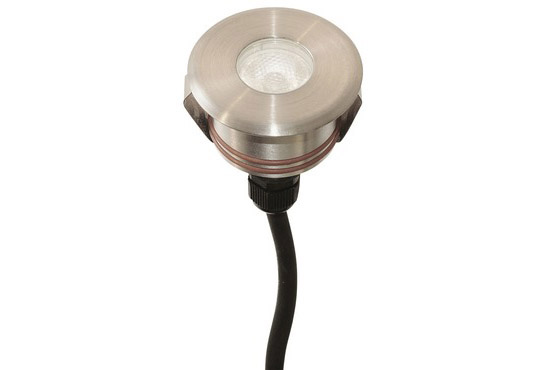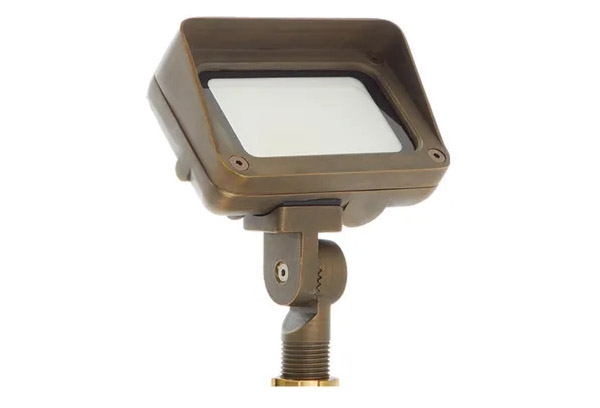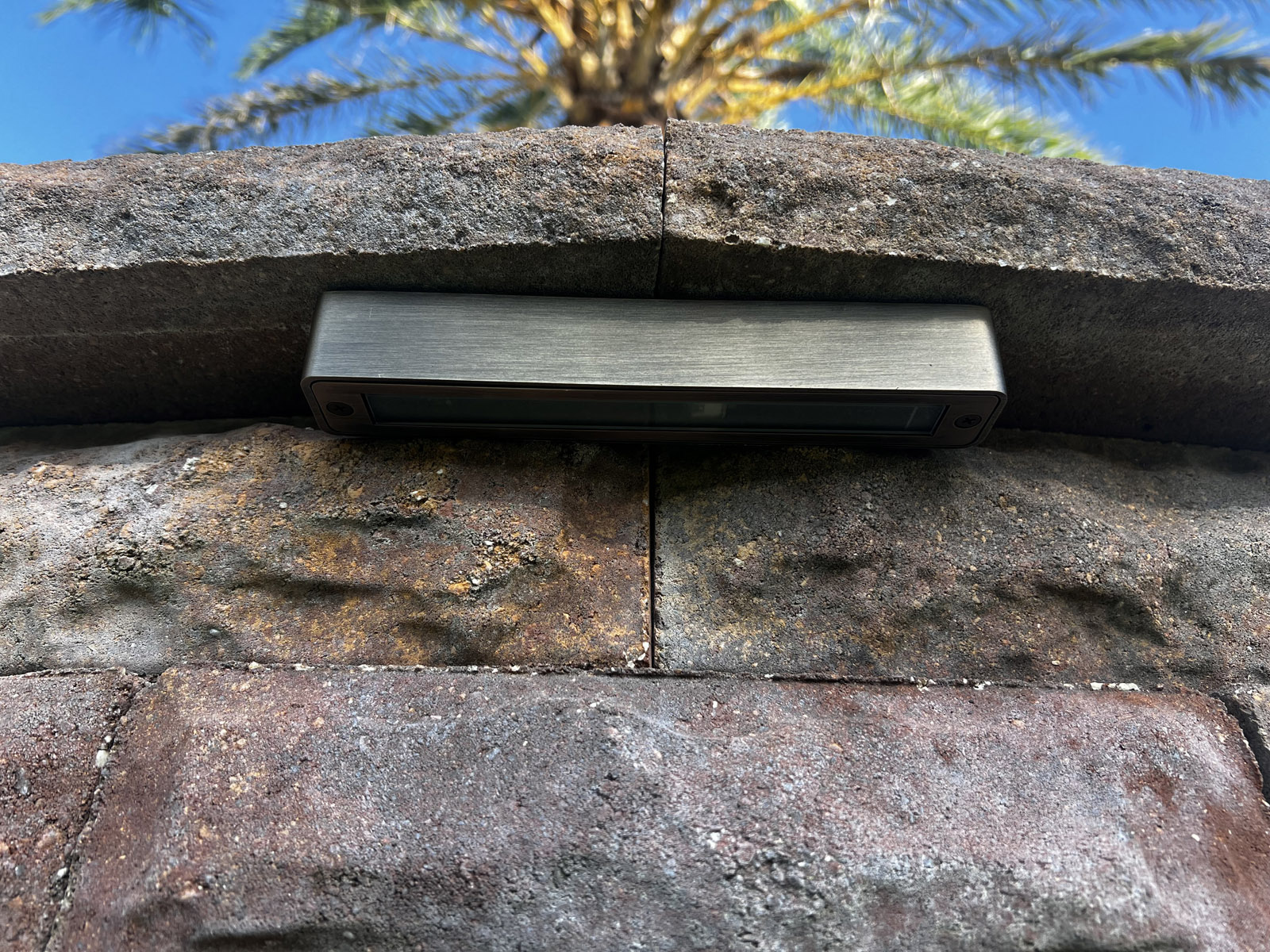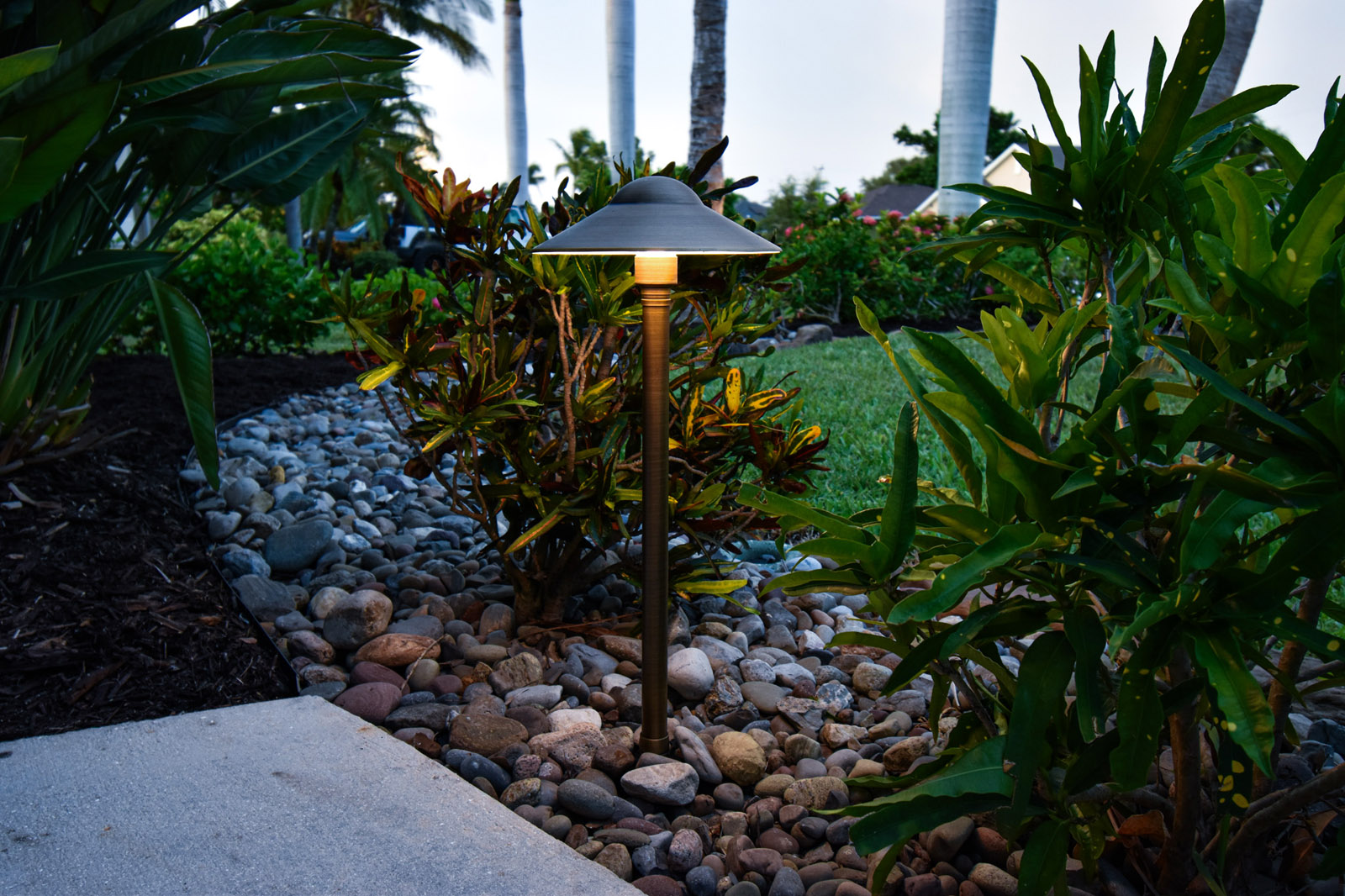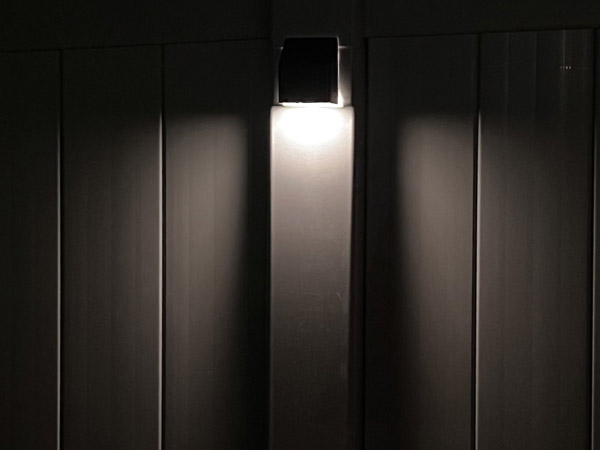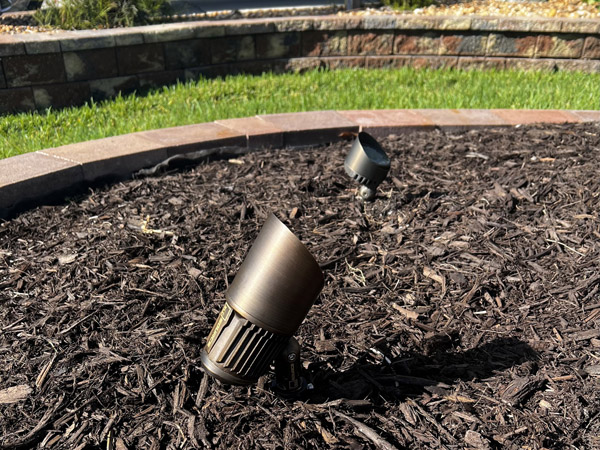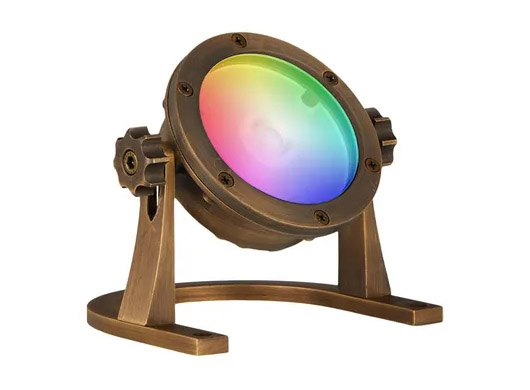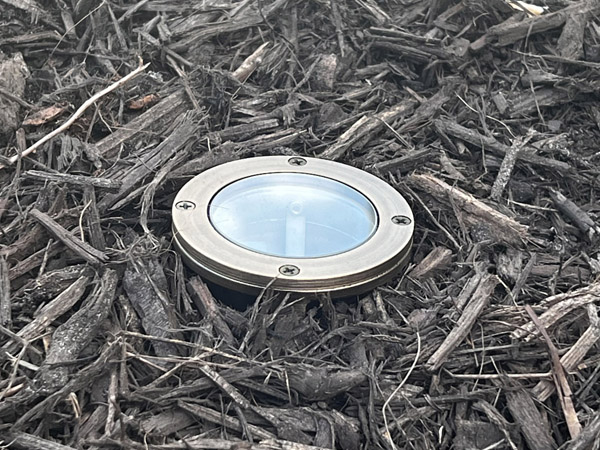Landscape Lighting Guide
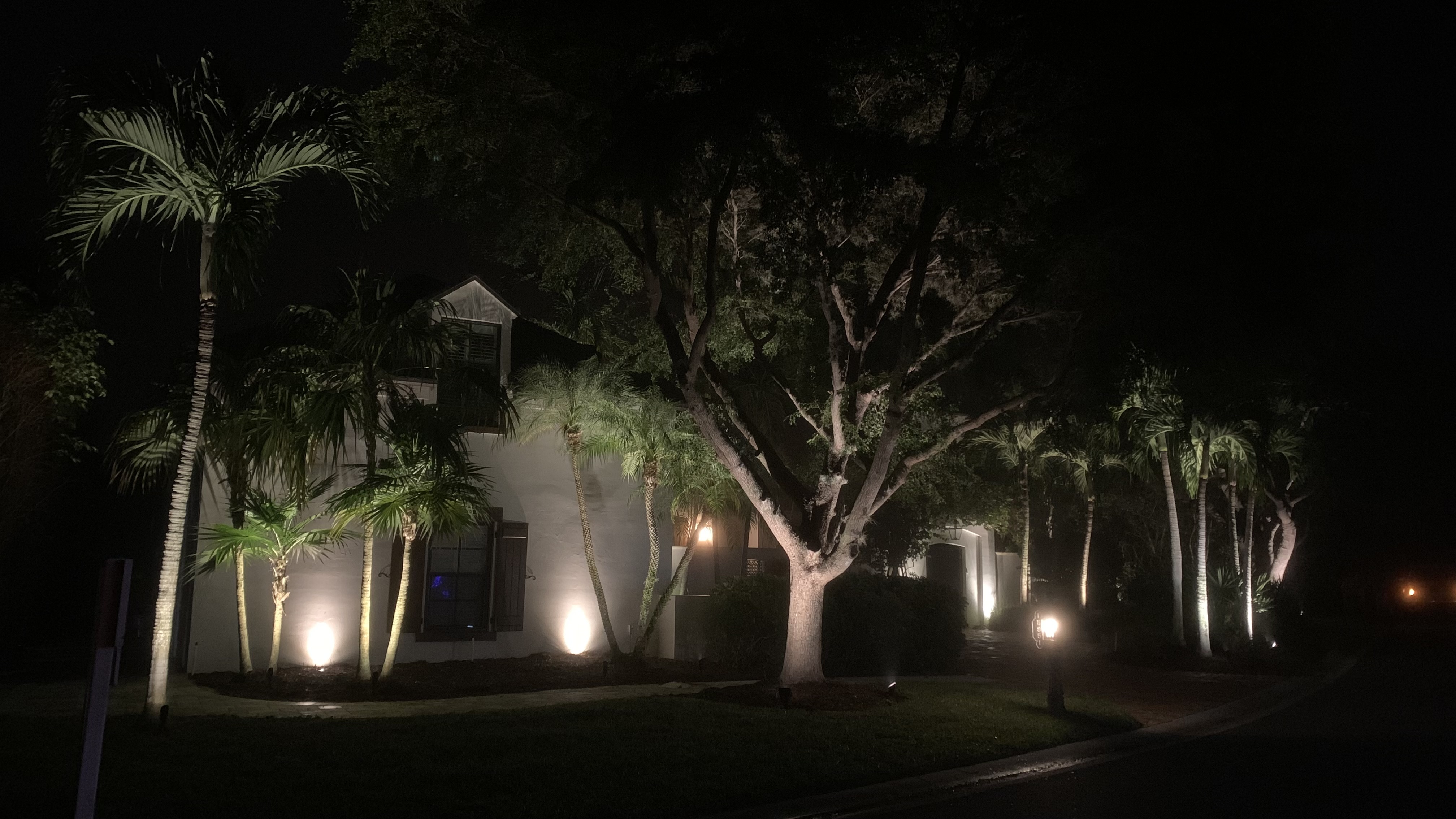
What is Landscape Lighting?
Landscape lighting or Outdoor lighting refers to the use of Illumination to Highlight Structures, Landscaping, or any Object of interest. There are Five core objectives that landscape lighting focuses on. The first being lighting Aesthetics, and the second being Usability, Safety, Security and Value.
When properly planned a landscape lighting system can have the ability to dramatically transform your outdoor space into a place of beauty. The lighting effects created will make your property feel more inviting and allow you to visually connect different areas of your living space.
To achieve a superior lighting scheme, knowledge of outdoor lighting, an eye for lighting design and planning the design are important. Described below are the basics of landscape lighting design, the various types of lighting used and their functions.
Planning a Landscape Lighting Project
The first step in enhancing your home after sunset is to educate yourself about the possibilities. This includes considering:
- Technology - Automated Features and Color Options
- Objects you should light
- Desired Effects and Techniques to light your landscape
- Types of lighting fixtures to use
A well-designed space during the night has a balance of light and dark. A good practice in Landscape lighting is “Less is More”. Initially you may not want to light up every object in the yard. You can always add more later. Another goal with landscape lighting is to see the effects of the light on objects and not the light fixture itself.
TECHNOLOGY AND COLOR OPTIONS
Some of the the most popular features include Color Changing RGBW LED Lighting and Automated systems which allow you control your landscape lighting system remotely on your Smart Phone or Device.
We offer the convenience of setting your landscape lighting with astronomic digital timers or Wi-Fi/Bluetooth timers. Astronomic timers automatically adjust based on your location, eliminating the need for manual adjustments every six months. With Wi-Fi/Bluetooth timers, you have the flexibility to control your lighting system from your tablet or any smart device, allowing you to effortlessly maintain the beauty of your home throughout the day.
LANDSCAPE LIGHTING TECHNIQUES
There’s a wide range of applications for outdoor lighting systems, each with its own specific purpose and effect. The right type of light in the right setting can significantly enhance the look and feel of your outdoor space, create drama, add a subtle highlight or act as a safety feature after the natural light of the day has faded.
When looking to enhance your outdoor space there are several lighting techniques that can be used to promote certain feelings or moods.
DOWNLIGHTING
The downlighting effect is like the moonlighting technique, although brighter and less subtle. Place a fixture high up, inside a feature like a trellis, tree and cast downwards over a large area. Place the light higher if you intend to illuminate a large portion of the yard, and lower if you wish to illuminate a smaller path or garden.
Achieve this looks with Down Lights. Down Lights appear the same as Spot lights but have mounting brackets for attaching to trees or other taller objects.
GRAZING
Grazing is a technique that involves placing the light close to the flat surface. You can aim it directly up or down the surface to create dramatic light and shadow play. It allows you to show off the interesting textures in your walls and increase security in darker areas. You will often see this technique in hotel and restaurant design.
Achieve this looks with well lights, spotlights, and hardscape lights.
MOONLIGHTING
Moonlighting is achieved by mounting downlights high in nearby trees. The effect can be enjoyed no matter the vantage point. On an open-branched tree, this can create a very impressive effect.
Achieve this look with spotlights.
PATHWAY LIGHTING
Pathway lighting may seem like a basic landscape lighting technique. However, it can easily be implemented wrong. Consider how many lights are really required. You will often find too many lights are used for a project. This creates an over-lit space which often feels cramped. Try to place your fixtures on either side of the path. Work back and forth to create a safe and inviting entryway. Lighting walkways with lower-level ground garden lights can provide security and safety.
Achieve this look with pathway lights and bollards.
SHADOWING
Shadowing can create a softer, more moody effect. It is the opposite technique of silhouetting. The light is placed between the item being lit and the main vantage point. The light source is then aimed at the item. To maximize the effect, you will want a wall or flat surface behind the item being lit. It will catch the shadows created by the highlighted piece.
Achieve this look with spotlights, floodlights, and well lights.
SILHOUETTING
Silhouetting is done by placing the light source behind the item, where it cannot be seen. The light is pointed toward the main vantage point. This is a great way to highlight dramatic shapes you might not see in plain daylight.
Achieve this look with spotlights and well lights.
UPLIGHTING
Uplighting a more basic technique of landscape lighting. This is when landscape lights are mounted below or at ground level, shining the light upward. It creates drama with taller structures or larger trees.
Achieve this look with spotlights and well lights.
WASHING
Wash lighting brings your landscape all together after dark. Place a light with a wide beam between the main vantage point and the surface. This will create a soft and even light over the entire area.
Achieve this look with floodlights.
TYPES OF OUTDOOR LIGHTING
Once you decide on what to light, you must decide on how to light it. There are several core types of fixtures to consider when creating a lighting plan.
BOLLARD LIGHTS
Add bollards lights as a feature to accent and illuminate walkways, landscaping, buildings, and parking areas. They are great to stylize an area or to create an architectural look. You can use them as guideposts around a space, or to separate your driveway from your yard.
DECK AND STEP LIGHTS
Deck and step lights are usually installed directly into your hardscape or decking. They are often used to accent an architectural detail or to add a safe guide dark stair. You can also use them to wash light down exterior walls or to light up spaces for entertainment.
FLOODLIGHTS
Floodlights can illuminate a larger amount of space with the same wattage and lumen output as a spotlight. The spread of the beam can reach up to 120 degrees. As such, they can also be incorporated into the safety of your home from intruders.
HARDSCAPE LIGHTS
Hardscape lights are a newer form of landscape lighting. They are small lights with flanges or brackets that are installed into or onto structures. They are used to graze and wash walls with light.
PATHWAY AND WALKWAY LIGHTS
Pathway and walkway lights are the most common type of landscape lighting. They are small posts with a built-in light and capped with a diffuser. They can be spaced along a pathway or used to frame an area or feature in your yard. You can line them down a walkway, around a pond, or outline your driveway.
FENCE POST MOUNT AND PIER MOUNT LIGHTS
Post mount lights are designed to install onto a post or on top of a structure. They are great for situations where more architectural light is needed. They are often used for gates, fences, entrances, or around a deck.
SPOTLIGHTS
Spotlights can highlight many outdoor features. These may include trees, buildings, sculptural and architectural details. The beam of light from a spotlight is narrow and usually no wider than 45 degrees. Making the light more concentrated and easier to point and control.
UNDERWATER LIGHTS
Similar to the spotlight however, underwater lights are made to be submerged in water. Adding real drama to your outdoor water features.
WELL LIGHTS
Well lights are a variant of the spotlight. They are mounted in the ground and are used to upright trees, buildings, and large plant material. These fixtures are very versatile.
Achieving the right effect in Landscape lighting can be a difficult project to take on. But it all starts with the right types of lights and landscape lighting techniques. From there you can design the perfect layout for you. Enhancing your homes’ curb appeal, safety, and functionality.
Get Lit Landscape Lighting offers Landscape Lighting services for homes and businesses in Fort Myers, Cape Coral, Port Charlotte, Punta Gorda, Lehigh Acres, Estero, Bonita Springs, and Naples, Florida.

